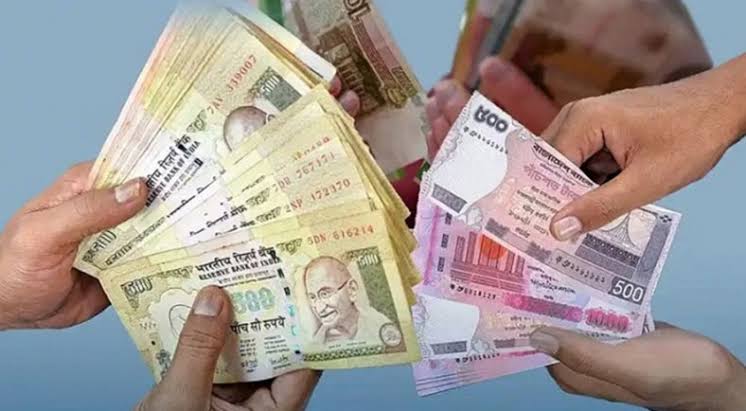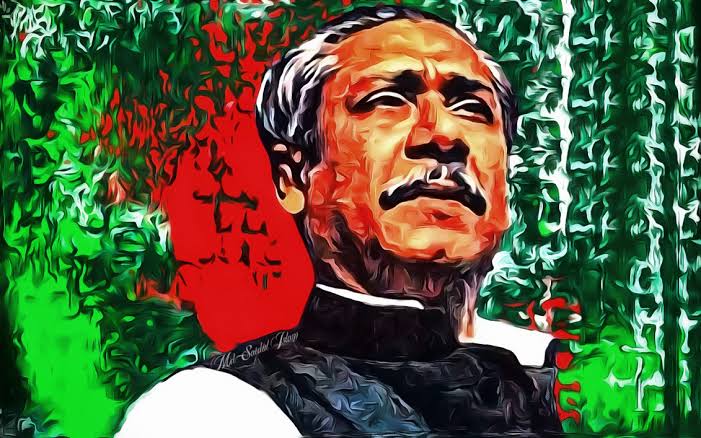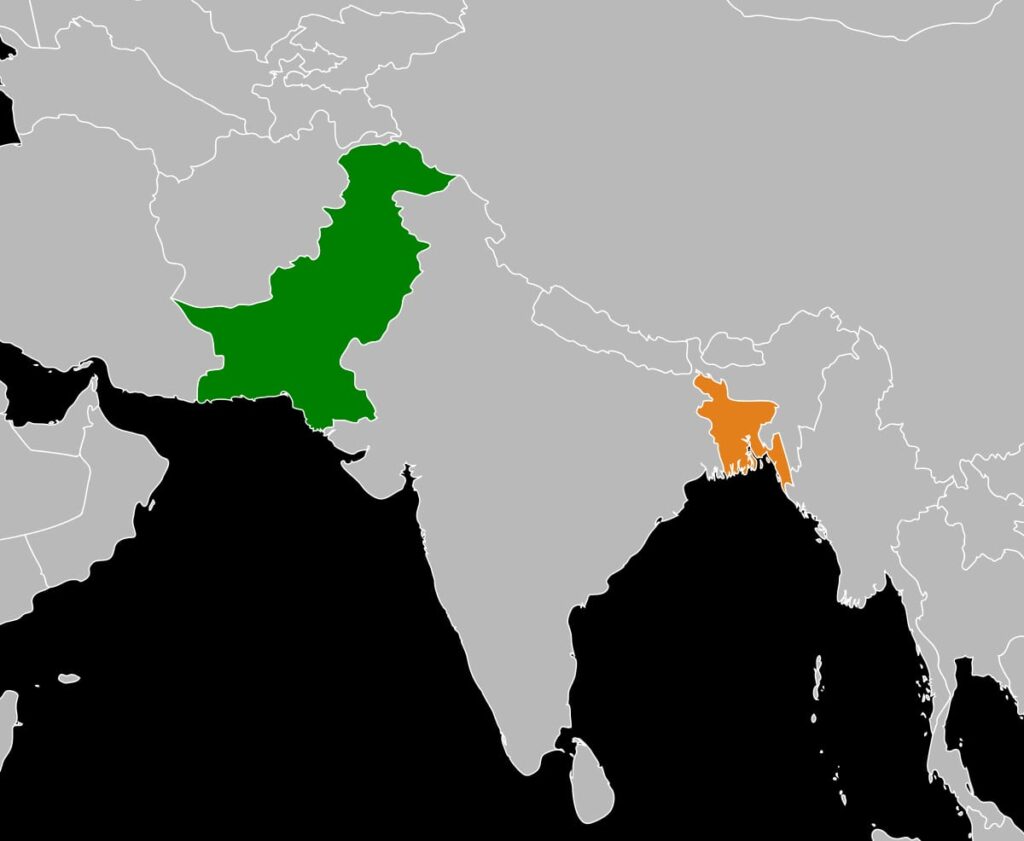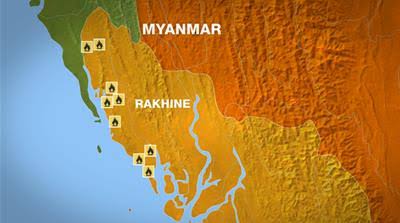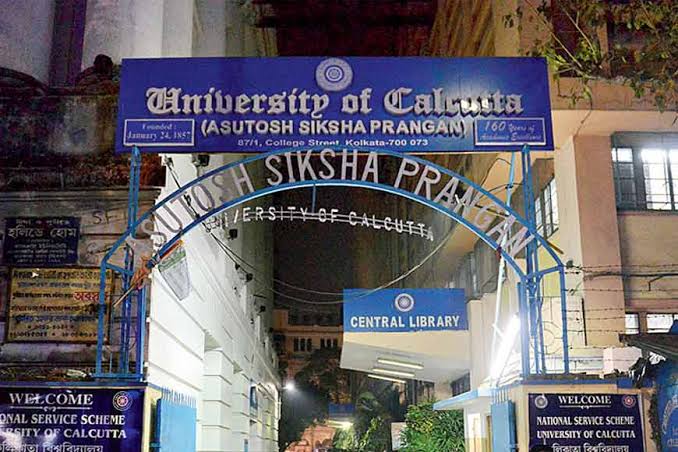ভারতের চাঁদে অবতরণ ও বাংলাদেশের বিজ্ঞানচর্চা
বিমল প্রামাণিক ২৩ শে আগস্ট ২০২৩ ভারতের একটি গৌরবময় দিন। মহাকাশ গবেষণায় আজ পর্যন্ত ভারতের বৈজ্ঞানিক সমাজের বহু সাধনার ফল চন্দ্রযান-৩ এর চাঁদে অবতরণ। এই চন্দ্রাভিযানের সাফল্যের পিছনে রয়েছে নিরন্তর গবেষণা প্রচেষ্টা, বৈজ্ঞানিক ব্যর্থতাও শক্তি যুগিয়েছে সাফল্যের সোপান তৈরিতে। বিজ্ঞান গবেষণার অগ্রগতিতে নতুন নতুন সাফল্য সামনে এসেছে। জনগণের কাছে বৈজ্ঞানিক সাফল্য যেমন পৌঁছেছে, তেমনই মানুষের কাছে বিজ্ঞানের সুফল আঁকড়ে ধরার আগ্রহ দ্রুত বৃদ্ধি পাচ্ছে। বিজ্ঞানের অগ্রগতি জনগণের অগ্রগতিতে নিরন্তর অবদান রাখছে। মানুষ আজকে বিজ্ঞানমুখী, বিজ্ঞান শিক্ষাই জনগণের ভবিষ্যৎ গড়তে একটা কার্যকরী হাতিয়ার, একথা ভারতের মানুষ আজকে বিশ্বাস করছে। শিক্ষা ব্যবস্থায় রয়েছে বিজ্ঞানের গুরুত্ব। ভারতবর্ষের প্রাচীনকাল থেকেই বিজ্ঞান চর্চার যে ইতিহাস আমরা দেখতে পাই, বিভিন্ন শতাব্দীতে যাদের নাম ভারতের সমাজে গণিতজ্ঞ, দার্শনিক এবং বিজ্ঞানী হিসেবে আদৃত হয়েছে, তাদের মধ্যে ছিলেন, আর্যভট্ট (গুপ্তযুগ ৩০০ থেকে ৫০০ শতক) গণিতজ্ঞ, পদার্থবিদ ও জ্যোতির্বিদ; বরাহমিহির (৫৫৫—৫৮৭) গণিতবিদ, দার্শনিক ও মহাকাশবিজ্ঞানী; ব্রহ্মগুপ্ত (৫৯৭—৬৬৮) গণিতজ্ঞ ও মহাকাশবিজ্ঞানী; ভাস্করাচার্য (প্রথম) (৭০০ শতক) গণিতবিদ, বৃত্তের ব্যবহার জানতেন; ভাস্করাচার্য (দ্বিতীয়) (১২০০ শতক) অগ্রগণ্য গণিতজ্ঞ, দশমিক ভগ্নাংশের উপর একটি পুস্তক রচনা করেছেন। এইসব বিজ্ঞানী মনীষীগণ, ভারতবর্ষের বিজ্ঞান চর্চায় পথিকৃৎ ছিলেন। আজকের আধুনিক ভারতের ‘চন্দ্রাভিযান—৩’ এর চাঁদে অবতরণ পূর্বসুরি বিজ্ঞানীদের’-ই পরম্পরা। অন্যদিকে লক্ষ্যণীয় যে স্বাধীন বাংলাদেশের মাত্র সাড়ে-তিন বছরের মধ্যে মুক্তিযুদ্ধের প্রধান নেতৃবৃন্দের নিশ্চিহ্নকরণের মধ্য দিয়ে মুক্তিযুদ্ধের আদর্শ ও প্রেক্ষাপটকে আমুল পরিবর্তনের মাধ্যমে ধর্মের রাজনীতিকরণ পাকিস্তানি আমলের মতই সমাজের গভীরে জাঁকিয়ে বসার কাজটি দ্রুততার সঙ্গে সম্পন্ন হয়ে গেল। পাকিস্তানি আবর্জনা পরিষ্কার করে আধুনিক বিজ্ঞানমনস্ক বাংলাদেশ গঠনের প্রক্রিয়াকে অঙ্কুরেই বিনষ্ট করা হল। এ বিষয়ে বিশিষ্ট অর্থনীতিবিদ ও সমাজবিজ্ঞানী অধ্যাপক আবুল বারকাতের বিশ্লেষণ প্রণিধানযোগ্য। “লক্ষ করা যায় যখন ধর্মের নামে রাজনৈতিক দল সৃষ্টি হয়, অথবা বিভিন্ন রাজনৈতিক দলগোষ্ঠী যখন তাদের কর্মসূচী ঘোষণাপত্রে নির্দিষ্ট ধর্মের পক্ষ গ্রহণ করে, অথবা ধর্মের নামে রাষ্ট্র-সরকার পরিচালনা করা হয়, অথবা সামাজিক বিভিন্ন কর্মকাণ্ডে যেমন শিক্ষা ব্যবস্থায় সুনির্দিষ্ট ধর্মের পক্ষাবলম্বন করা হয় প্রভৃতি। ধর্মের রাজনৈতিকরণের সামাজিক, সাংস্কৃতিক অভিঘাতটি দীর্ঘমেয়াদে ক্ষতিকর, প্রগতিবিরুদ্ধ।” এবিষয়ে আমাদের দেশকেন্দ্রিক অত্যন্ত প্রণিধানযোগ্য যে কথাটি কয়েকদিন আগে অধ্যাপক আনিসুজ্জামান বলেছেন, তা হল “সংবিধানের সংশোধনীর দ্বারা ১৯৭২ সালের রাষ্ট্র পরিচালনার মূলনীতি ফিরিয়ে আনা হয়েছে বটে, কিন্তু ইসলাম রাষ্ট্রধর্ম রয়ে গেছে। ধর্মনিরপেক্ষতা ও রাষ্ট্রধর্ম কীভাবে সহাবস্থান করতে পারে তা আমার বোধগম্য নয়। তাই ১৯৭২-এর সংবিধানে যেসব মূলনীতি ঘোষিত হয়েছিল অক্ষতভাবে তা যে ফিরে আসবে, আমার সে ভরসা নেই। এবং সে মোড় নেওয়ার সময়ে ইতিহাস আমার ভরসা- নির্ভরসাকে বিবেচনায় নেবে না। আজ মনে হয়, ১৯৭১ থেকে আমরা দূরে, বহু দূরে চলে এসেছি এবং ১৯৭১-এর পূর্ববর্তী ২৪ বছরের সংগ্রাম ও অর্জনের ধারার সঙ্গে তুলনা করলে তার পরবর্তী ৪৬ বছরের ধারাকে পশ্চাদপসরণ ও বিসর্জনের ইতিহাস বলতে হবে।” ১ ১৯৪৭ সালে ভারত বিভাগোত্তর কালপর্বে তৎকালীন পাকিস্তান রাষ্ট্রে ক্রমেই রাজনৈতিক অঙ্গনে ধর্মীয় মৌলবাদের বাড়বাড়ন্ত লক্ষ করা যায়। পঠনপাঠন ও গবেষণার ক্ষেত্রেও তার প্রভাব পড়ে। ১৯৭৪ সালে পাকিস্তান পার্লামেন্টে ‘আহমদিয়া মুসলমান’কে অমুসলমান ঘোষণা করে একটি আইন পাশ করা হয়। এর ফলে আহমদিয়া সম্প্রদায়ের উপর চরম অত্যাচার নেমে আসে। পাকিস্তানের বিশিষ্ট বিজ্ঞানী অধ্যাপক আব্দুস সালাম তৎকালীন পাকিস্তান সরকারের বিজ্ঞান বিষয়ক পরামর্শদাতা ছিলেন। পাকিস্তানের নিউক্লিয়ার এনার্জি ও স্পেস রিসার্চ সংস্থারও চেয়ারম্যান ছিলেন। আহমদিয়া সম্প্রদায়ের মানুষ হওয়ার কারণে অধ্যাপক আব্দুস সালাম দেশত্যাগ করতে বাধ্য হলেন এবং লণ্ডনে আশ্রয় নিলেন। পাকিস্তান আমল থেকেই মুসলমানদের কাছে বিজ্ঞানের চর্চার চেয়ে ধর্মের গুরুত্ব প্রাধান্য পেয়ে এসেছে। শুধুমাত্র রাষ্ট্রীয় ও সামাজিক ক্ষমতা দখল করার মানসে দেশভাগ, সামরিক শাসন, গণহত্যা, পশ্চাৎমুখী শিক্ষার প্রসারণ কোনো দিক থেকেই মুসলমান সমাজ ও শাসকগণ পিছিয়ে নেই। মুসলমান সম্প্রদায়ের ডি এন এ তো ভারতবর্ষের ডি এন এ থেকে ভিন্ন নয়। শুধু কি ধর্মীয় কারণে তারা পশ্চাৎমুখী ? একবিংশ শতাব্দীর বহুমুখী বৈজ্ঞানিক সাফল্য ও চেতনা থেকে তারা কি শিখছে? বাংলাদেশে ধর্মনিরপেক্ষ প্রক্রিয়াকে নির্মুল ক’রে ধর্মভিত্তিক প্রতিক্রিয়াশীলতাকে প্রাতিষ্ঠানিক রূপ দেওয়া হচ্ছে। দেশে একটি শক্তিশালী ধর্মাশ্রয়ী রাজনীতির প্রয়োজনে শুধু সংবিধানের ইসলামীকরণই যথেষ্ট ছিল না, রাজনীতিতে এবং সরকারে ধর্মান্ধ মানব সম্পদের যোগানটাও জরুরী ভেবে মাদ্রাসা-ভিত্তিক শিক্ষাব্যবস্থার শ্রীবৃদ্ধি ও স্বাধীনতা বিরোধী রাজনৈতিক দলগুলির প্রত্যাবর্তন ও পুনর্বাসন দেখতে পাই। বাংলাদেশে সাম্প্রতিক বছরগুলোতে মাদ্রাসা শিক্ষা ও ইসলামী মৌলবাদী দলগুলোর যুগপৎ শ্রীবৃদ্ধির ঘটনা এদেশের বর্তমান এবং ভবিষ্যৎ রাজনীতির চরিত্র ও গতিপ্রকৃতি অনুধাবন করতে সাহায্য করবে। “দীর্ঘ চার দশকের অধিক সময়কাল ধরে বিশেষ রাষ্ট্রীয় আর্থিক ও অন্যান্য পৃষ্ঠপোষকতায় বিকশিত হয়ে এদেশে মাদ্রাসা জনশক্তি আজকে যে স্তরে পৌঁছতে সক্ষম হয়েছে, যেখানে এদেশে তারা নিরাপদেই এমন কর্মকাণ্ড চালাতে পারে যে কর্মকাণ্ড (যেমন, তালেবান আন্দোলন) আজকের আন্তর্জাতিক বিশ্ব কর্তৃক আধুনিক ইতিহাসের অন্যতম মানবতা বিরোধী কর্মসূচী হিসেবে বিবেচিত। মুক্তিযুদ্ধের চেতনা-বিরোধী আদর্শ ইতিমধ্যেই সমাজ ও রাষ্ট্রের প্রায় সকল কাঠামো ও প্রতিষ্ঠানকে সংক্রমিত করে ফেলেছে, একটা বিষয় হলফ করেই বলা যায় যে, মাদ্রাসা শিক্ষা ব্যবস্থাকে আমূল সংস্কার না ক’রে এদেশে মুক্তিযুদ্ধের আদর্শকে প্রাতিষ্ঠানিক রূপ দেওয়া কঠিনই হবে। আবার ঐ ধরণের কোন সংস্কারে গেলেও যে ইতিমধ্যেই শক্তিশালী হয়ে ওঠা বিশাল সাম্প্রদায়িক গোষ্ঠীর দারুণ প্রতিরোধের সম্মুখীন হতে হবে, সে ব্যাপারে সন্দেহ নেই।”২ আমরা একবার অতীতে ফিরে দেখতে পারি, পাকিস্তানের সৃষ্টির পর ২৩ বছরের পঠন-পাঠন বিষয়ে একবার ফিরে তাকালে দেখা যায় পূর্ব-পাকিস্তানে বাংলা ভাষায় পড়াশোনা করার আগ্রহ ছাত্র-ছাত্রীদের মধ্যে ক্রমবর্ধমান ছিল।আইয়ুব খানের আমলে স্কুল পাঠক্রমে একশত নম্বর উর্দুভাষা চালু করা হলেও ছাত্র/ছাত্রীগণ উর্দুর প্রতি মোটেই আগ্রহী ছিল না – তা বোঝা যায় এস এস সি পরীক্ষার ঐচ্ছিক বিষয়ে উর্দু/আরবি ভাষার ছাত্র-ছাত্রীর সংখ্যা ছিল না বললেই চলে। যারা মাদ্রাসা থেকে ফাজিল পাশ করতো তাদেরকে সাধারণ শিক্ষার অষ্টম মান (ক্লাস এইট-৮) সমতুল গণ্য করা হতো। এরা শুধু স্কুলের মৌলবি হিসেবে চাকরি পেত। অর্থাৎ মাদ্রাসা শিক্ষার গুরুত্ব খুবই কম ছিল। উচ্চ শিক্ষার বিজ্ঞান শাখায় কোন বাংলা বই পাওয়া যেত না, বিদেশী/ভারতীয় বই ছাত্র-ছাত্রীগণ ব্যবহার করত। পাকিস্তানের শেষ লগ্নে এসে কলেজ-বিশ্ববিদ্যালয় পর্যায়ে দু’একটি বাংলা বই বাজারে আসে। আমার মনে আছে গণিতের অধ্যাপক হাবিবুর রহমানের যোগাশ্রয়ী বীজগণিতের (Linear Algebra) কথা। তিনি ১৯৭১ সালে বাংলা-প্রীতির জন্য পাকিস্তান বাহিনীর হাতে খুন হয়ে যান। এর পিছনে ছিল বাংলাভাষার প্রতি ভালবাসা এবং মাতৃভূমির প্রতি অকৃত্তিম শ্রদ্ধা ও আনুগত্য। তাঁরই স্মৃতিতে রাজশাহী বিশ্ববিদ্যালয়ের বর্তমান ছাত্রাবাস হাবিবুর রহমান হল । পাকিস্তানি আমলেও নবম-দশম শ্রেণীর কলা বিভাগে সাধারণ বিজ্ঞান অবশ্য পাঠ্য ছিল – যার ফলে কলা বিভাগে পাশ করেও ভাল ছাত্র-ছাত্রীগণ কলেজে বিজ্ঞান বিভাগে পড়াশোনা করার সুযোগ পেত। কিন্তু আজকের বাংলাদেশে নবম-দশম শ্রেণীতে বিজ্ঞান ঐচ্ছিক বিষয় হিসাবে চলে যাওয়ায় একটা বড় অংশের ছাত্র-ছাত্রী আধুনিক বিজ্ঞানের সাধারণ জ্ঞান থেকেও বঞ্চিত হচ্ছে। তাছাড়া মাদ্রাসা শিক্ষায় ছাত্র-ছাত্রীর সংখ্যাও মোট ছাত্র-ছাত্রীদের প্রায় এক-তৃতীয়াংশ – যারা বিজ্ঞান পাঠ থেকে সম্পূর্ণ বঞ্চিত। আমরা দেখতে পাচ্ছি, মোট ছাত্র-ছাত্রীর তিন চতুর্থাংশের বেশি সংখ্যক পড়ুয়ার বিজ্ঞানের সাধারণ জ্ঞানের সঙ্গেও পরিচয় ঘটছে না। অর্থাৎ বাংলাদেশের সিংহভাগ জনগোষ্ঠী আধুনিক জ্ঞানবিজ্ঞানের প্রাথমিক পরিচয় ব্যতিরেকেই গড়ে উঠছে। কুসংস্কার, ধর্মান্ধতা, ধর্মীয় সন্ত্রাসবাদ প্রভৃতি ক্ষেত্রে এই জনগোষ্ঠী সহজেই আকৃষ্ট হয়ে পড়ছে। সম্প্রতি বিজ্ঞান …



